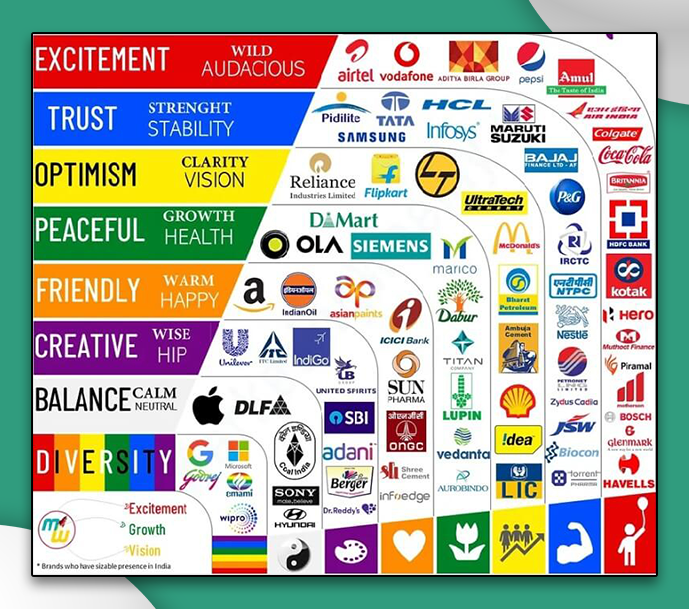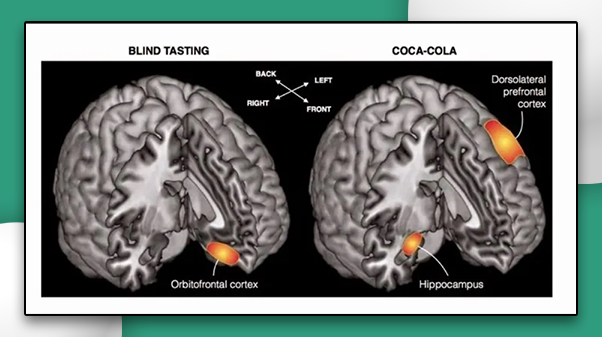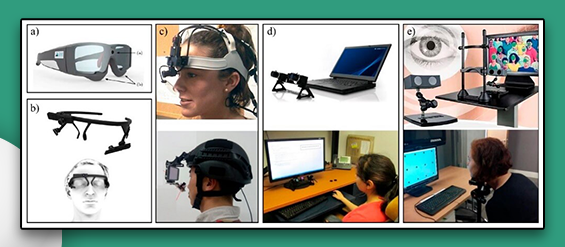
What is Neuromarketing and How Does it Work?
Have you ever found yourself giving into a spontaneous desire to make a purchase because an advertisement impressed you, the packaging appealed to you, or something just nudged you? Most likely, yes. Harvard studies suggest that 95% of purchasing decisions are made subconsciously, emotionally. And companies have learned to work with this, utilizing neuromarketing.
1. Why Neuromarketing is Needed
The precursor to neuromarketing was the research conducted in the late 1970s by American psychologists Daniel Kahneman and Amos Tversky, who were the first to study how people use heuristics — processes that facilitate the discovery of new insights — in decision-making and the cognitive biases — errors in thinking that arise because the brain simplifies information.
The analysis of cognitive and situational factors conducted by Kahneman and Tversky helped to understand the psychological processes that govern our judgments and decision-making. For applying psychological methods in economic science, particularly in the study of judgment formation and decision-making under uncertainty, Daniel Kahneman was awarded the Nobel Prize in 2002.
The research by Daniel Kahneman and Amos Tversky drew attention from practitioners and theorists to the psychological aspects of decision-making. Previously, it was assumed that consumer behavior could be controlled by a simple mathematical function, and their experiments, especially the prospect theory, although not directly related to the situation of consumer choice, fundamentally changed the angle from which economists view humans. Their research was further deepened by other scientists.
Eventually, scientific theories interested marketers who assume that it is possible to study consumer brain reactions and apply them in marketing to achieve a more predictable result of irrational choice.
The term “neuromarketing” first appeared in 2002 — introduced by Professor Ale Smidts of Erasmus University Rotterdam.
Neuromarketing is the study of unconscious factors that influence the purchasing decision — smells, colors, sounds, tastes, touch. Using special equipment, marketers study the brain’s reaction to a product or service and which cognitive and affective processes influence decision-making. This allows understanding how to better present the product, make advertising more effective, and arrange products on shelves — in general, how to stimulate a person to make a purchase. This field combines knowledge from cognitive psychology, neurophysiology, and marketing.
Thus, the main advantage of neuromarketing over traditional marketing is the ability to avoid gaps in research that classical methods such as surveys and questionnaires permit, and to rely not only on words but literally on the physiological reactions of the consumer.
After all, a buyer may tailor their responses to the situation, and as noted by Patrick Renvoise, co-founder of the neuromarketing company SalesBrain, in his TEDx Talks, the buyer often cannot express in words exactly what they want.
2. How Neuromarketing Works
Research into the human neural system comes into play. For the successful promotion of products, companies may be interested in a range of existing types of consumer emotional activity.
Marketing activities can impact several main channels of human perception:
2.1 Vision: the appearance of the product, packaging, and colors used in the design
Studies have shown that, for example, the color red can cause an increase in pulse rate, blue can lower blood pressure, and green is associated with health. Therefore, brands carefully think through their logos and packaging. Ideally, the entire company is associated with specific colors.
For instance, Coca-Cola practically owns the color red, which is immediately recognizable. And the jewelry company Tiffany & Co. even has its own personal color, known as “Tiffany,” which has become synonymous with sophistication and luxury.

The Marketing Weekly team analyzed the logos of major brands in India and presented the results in an infographic, which highlights the associations and emotions elicited by a specific color, and the companies that use this color.
2.2 Hearing: the sound environment in the store, the melody in the advertisement.
A study by scientists from the University of Leicester revealed that music in a store influences the buyer’s choice. An experiment conducted in a wine shop in England showed that when German music was played, customers more often chose German wines, and when French music was played — French wines. However, when asked why they chose that particular wine, customers denied the influence of music and explained their decision with their preferences. Thus, as we mentioned, a consumer’s words and actions do not always match.
2.3 Smell: the scent in the store.
Scents are effective because information about them reaches the brain faster than signals from eyes and ears. Therefore, for example, when selling a house before showing it, it is recommended to bake buns — the smell of baking creates a sense of coziness. This trick was used by the Hard Rock Hotel in Orlando, which increased ice cream sales by 45% thanks to the artificial scent of cookies and waffle cones. The scent was developed by ScentAir, a company specializing in creating custom scents, including for increasing sales or brand recognition.
2.4 Taste of the Product and Tactile Perception
These also matter. With the help of special equipment, one can observe the brain’s reactions to different stimuli: how attention was distributed, where the gaze was directed, whether pupils dilated, the emotions from interaction, how the body physically respond—changes in heartbeat, breathing rate, sweating, and which brain regions were activated upon stimulation.
It’s important to consider a number of parameters. For example, the correlation between a consumer’s reaction and their judgments when they do not align. Or the change in brain activity during the selection process from several offered options. The influence of external factors on the senses is also crucial to determine how the environment helps make a preferred choice. Memory is also one of the key research factors—what the consumer remembers after contact with the brand. All this helps make the product or service as attractive as possible.
For instance, one of the first neuromarketing studies in 2004 involved Coca-Cola and Pepsi’s marketing strategy. Participants were placed in a functional MRI scanner and given samples of both drinks through a straw. Based on subjective sensations, Pepsi was more liked. However, once the labels were shown, many changed their mind, admitting that Coca-Cola was indeed better. Scientists observed what happened in these people’s brains. It turns out that when participants knew they were drinking Coca-Cola, a certain center of socially conditioned pleasure in the brain was activated. That is, social influence, brand recognition were much more important and stronger than mere taste qualities.

During blind testing (left), the orbitofrontal cortex, responsible for decision-making, was activated in participants. When participants knew they were drinking Coca-Cola, the dorsolateral prefrontal cortex, responsible for memory and emotions, was activated. Neuromarketing also considers cognitive biases. There are many such biases, and marketers use them to their advantage. For example, the default choice effect, where a more expensive product is offered as the base option. Or the free trial period, which is often offered by services. Even the notorious pricing trick, where the price tag shows “599” instead of “600,” is also working with our cognitive bias.
One of the most powerful cognitive biases marketers use is anchoring. It represents a form of cognitive bias that, when making decisions, makes people focus on the initial information available. It works particularly well with pricing when the seller sets one price serving as an anchor, then announces a lower price.
Thus, when introducing the world to the iPad, Steve Jobs said that marketers recommend selling it for $1,000, and the price of 999 appeared on the screen. After that, he announced that the actual price of the new product would start at $499. The figure on the screen changed, and the price seemed to magically drop by half. Another marketing trick is the dopamine loop. Dopamine is a neurotransmitter produced in the human brain and serves as an element of the brain’s reward system. It arises in anticipation of something interesting, desirable, especially actively in response to an unexpected reward. Bonus systems, practices of compliments, raffles, gifts offered by brands are built on this principle.
3. How Neuromarketing is Used in Advertising
Emotional Engagement through Visual Stimuli: Leveraging neuromarketing insights, companies can craft advertising campaigns that effectively evoke strong emotional responses from their target audience. For instance, advertisements for children’s products often utilize images of happy children and parents to provoke feelings of warmth and care, increasing the likelihood of a purchase.
CTA Optimization Using Color Psychology: Neuromarketing can help determine which colors are most effective in drawing attention to call-to-action (CTA) buttons in ads and on websites. For example, employing a red color for a “Buy Now” button can heighten a sense of urgency and stimulate immediate purchases due to its ability to elevate alertness and arousal.
Content Personalization Based on Cognitive Preferences: By analyzing how different types of content impact brain activity, companies can create more personalized advertisements that speak directly to the interests and preferences of their target audience. For example, if research shows that a specific audience responds better to overcoming challenges, advertising campaigns can include narratives about how products helped people overcome obstacles.
Utilizing Sound Cues to Enhance Branding: Neuromarketing can uncover how certain sounds and melodies evoke associations with specific emotions or memories, which can be used to strengthen brand identity. By creating unique audio logos or jingles that elicit positive emotions or reinforce brand recognition, companies can enhance the effectiveness of their advertisements and foster an emotional connection with consumers.
4. How Neuromarketing Research is Conducted and With What Devices
Neuromarketing utilizes several types of biometrics to track consumer reactions. These include respiratory rate, even minor sweating, changes in pulse, direction of gaze, facial expressions, and brain electrical activity. Studies combine, examining various parameters, but not necessarily all, to obtain a more complete picture. Technologies that help visualize physiological reactions are used for this purpose.
4.1 Eye Tracking
A special camera records eye movement, gaze direction, and pupil dilation. These indicators can evaluate, for example, which part of the screen viewers’ gaze lingers on during an advertisement, allowing the most important information to be placed accordingly. Or it can optimize brand colors, packaging design, or shelf layout.

Types of eye-tracking equipment:
a) glasses for visual monitoring;
b) headband device;
c) helmet device;
d) remote control and management devices.
4.2 Galvanometer
Measures skin electrical activity, or skin galvanic response. The device is placed on the hand or finger and assesses the level of arousal and cognitive load — memory engagement when interacting with the brand. This helps optimize the advertising campaign based on what causes the audience the most arousal.
A polygraph can also capture emotional reaction, heart rate, breathing rate, and skin electrical activity.
4.3 Skin galvanic response sensor. High-resolution Photo and Video Cameras
In combination with software applications based on the Facial Action Coding System (FACS). Such cameras capture, and machine algorithms recognize the subject’s facial expressions and correlate them with a specific emotion triggered by the reaction to what is seen.
Example of a mobile laboratory Face reading work — an emotion assessment system using automatic recognition of human facial micro-expressions — to determine advertising effectiveness.
Leave a request for a free consultation with our marketing agency WGG, and we will develop an individual plan for your business promotion for you!























